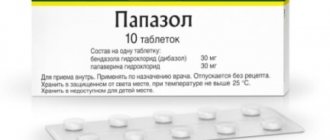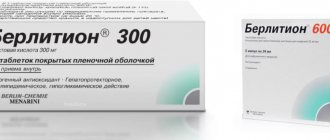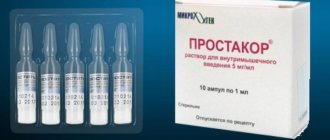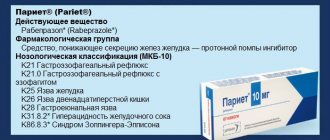How to use?
The drug is available in tablet form. They should be taken orally as prescribed by a doctor. The tablet does not need to be chewed or crushed in any other way. You can take the drug before or after meals - it doesn’t really matter. Be sure to drink Artra with plenty of water.
Most often, adults are prescribed to take 1 tablet twice a day. The course of treatment lasts 3 weeks. After this, you can reduce the dose of the drug to 1 tablet per day.
Therapy lasts from 5-6 months. The doctor may re-prescribe treatment with the drug after a couple of months.
The dose and frequency of administration depends on the stage of the disease and the diagnosis. That is why you can take the drug only after a full examination and after a doctor’s prescription.
Compound
The drug Artra belongs to chondroprotective medications that are used to treat dystrophic-degenerative diseases of the musculoskeletal system. Chondroprotective medications literally protect (protect) joints, bones and cartilage from subsequent destruction.
Medicine Artra
Artra tablets contain the following medicinal substances:
- sodium chondroitin sulfate (500 milligrams) is the main active ingredient;
- glucosamine hydrochloride (500 milligrams) is the main active ingredient;
- disubstituted calcium sulfate (230 milligrams);
- microcrystalline cellulose (185 milligrams);
- croscarmellose sodium (80 milligrams);
- stearic acid (70 milligrams);
- magnesium stearate (10 milligrams).
Release form
The drug Artra is available in the form of film-coated tablets. The color of the shell is white or whitish-yellow with flecks, sometimes blue or even transparent (depending on the manufacturer).
The composition of the drug shell includes the following substances:
- hydroxypropyl methylcellulose (35 milligrams);
- titanium dioxide “E171” (8.2 milligrams);
- triacetin (6.8 milligrams).
The drug is sold in four different packages containing 30, 60, 100 and 120 tablets. The tablets are packaged in a bottle made of high-density polyethylene.
The drug Artra is not available in other forms, but you can independently prepare a solution for oral use by crushing the tablets and dissolving them in liquid. However, this is not recommended due to a possible decrease in the therapeutic effect of the drug.
Indications for use
The main indication for use of the drug Artra is osteoarthritis of the peripheral joints and spinal column.
Arthra tablets
Also, the drug Artra can be used in complex therapy of other degenerative pathologies of the musculoskeletal system. Namely:
- Osteochondrosis of any part of the spine.
- Multiple intervertebral hernias.
- Direct injuries to the spinal column.
- Spondylolisthesis of the spine.
- Infectious and inflammatory diseases of the joints or spinal column.
- Hypothermia of the joints.
- With low effectiveness for autoimmune lesions of the joints and spinal column.
- During the rehabilitation period after surgery on the spinal column or joints (both large and small).
Contraindications
The drug Artra has a relatively small number of contraindications for use. The main contraindications to the drug Artra include:
- the patient has serious renal dysfunction;
- individual intolerance to the constituent components of the drug.
Artra tablets
It is also undesirable, but not prohibited, to take Artra tablets for the following diseases:
- diabetes mellitus of any form (including compensated);
- bronchial asthma;
- bleeding in any organs or tissues;
- if there is a tendency to bleeding (especially if the patient has confirmed hemophilia);
- acute infectious diseases (both local and systemic);
- various diseases of the gastrointestinal system (due to the fact that the drug against the background of such pathologies may be poorly absorbed into the body).
Side effects
In most cases, Artra is well tolerated by patients. Side effects occur in approximately every tenth patient and are usually moderate.
When taking Artra tablets, the following side effects may develop:
- Moderate pain in the epigastric region.
- Stool disorders (usually constipation, in rare cases - diarrhea).
- Prolonged flatulence.
- Moderate dizziness.
- Allergic reactions (most often in the form of local urticaria, swelling is rare, in very rare cases severe allergic reactions are possible, up to anaphylactic shock ).
Artra tablets can be used to treat almost any dystrophic diseases of the musculoskeletal system
If you develop moderate side effects from Artra tablets, you should not stop taking them. If side effects of moderate or severe severity develop, you must stop taking the drug and immediately consult a doctor.
Impact on the body
In general, Arthra tablets do not have a significant effect on the patient’s body. The exception is the relatively common occurrence of dizziness in the first hours after taking the drug.
For this reason, it is not recommended to drive a car for several hours after taking Artra tablets. In addition, for the same reason, it is not recommended, after taking the medicine, to work on mechanisms that are potentially unsafe for the operator (for example, a milling machine).
In terms of interaction with other drugs, an increase in the effect of anticoagulants, antiplatelet agents and fibrinolytic drugs was noted when taking Artra tablets.
In addition, while taking Artra, the absorption of tetracycline antibiotics may be enhanced.
Contraindications to taking the drug
Some patients are prohibited from using Artra for therapy. Here's who this drug will be dangerous for:
- People with allergies to chondroitin and glucosamine;
- If kidney function is impaired;
- Dangerous for patients with bronchial asthma;
- For diabetes mellitus;
- At the time of bleeding;
- Prohibited for pregnant women;
- Dangerous during lactation.
You should not take the drug if you drive. Due to frequent dizziness, an emergency situation may occur.
About analogues and prices
Since most manufacturers use different systems for the synthesis of active drugs, we can say that this drug has no absolute analogues. But if you focus on drugs that also contain two chondroprotectors at the same time, then the closest is Teraflex.
https://www.youtube.com/watch?v=_N7u-hlC2Nw
Analogs of the drug Artra in this case are Teraflex and Teraflex Advance. But what is better - Teraflex or Arthra, a doctor must decide in each specific case; replacing the drug on your own is not the best solution.
Both drugs are prescribed to restore cartilage tissue. But which of them is better, because the instructions for use for the drug Artra and Teraflex indicate the same active ingredients.
Theraflex contains 400 mg of sodium chondroitin sulfate and 500 mg of glucosamine hydrochloride.
Arthra tablets contain the same substances except for the concentration. This drug contains both substances in an amount of 500 mg. It is also believed that Arthra, after completing the course, lasts longer than Terflex.
The indications, contraindications and effectiveness of these chondroprotectors are almost the same, so it is difficult to say which drug is better. Your doctor will help you decide on the most appropriate drug, because the concentration of the active substance chondroitin varies between drugs.
The following substitutes are also considered to be similar in composition to drugs:
- The drug "Condronova" is produced in capsules, and, in addition, in the form of an ointment intended for external use. The dosage of glucosamine with chondroitin in this case is not 500, but only 200 milligrams. The manufacturer of this analogue of “Arthra” is Indian, and is called Panacea Biotec.
- Medicine "Tazan". This drug is produced, like Arthra, in tablets. They produce a product with a composition and dosage similar to “Artre”. The manufacturer of the medicine is Russian.
- The drug "Chondroglucidum" is very popular. This is another analogue of “Arthra”. Like Artre, this substitute also has a tablet form and a similar dosage. An analogue is produced, among other things, in the form of a gel of 50 or 100 grams. The manufacturer of the drug is Russian, namely the previously mentioned. It is quite possible to find analogues cheaper than Arthra.
- The analogue "Chondroflex" is also a domestic drug, developed on the basis of glucosamine and chondroitin, which are contained in an amount of 250 milligrams. This analogue of “Arthra” is also made in Russia.
Arthra or Dona: which is better? Both drugs are drugs that stimulate the restoration of cartilage tissue. But the drugs are considered completely different.
Differences:
- Active substance. As part of Artra, you can see two main components in an amount of 500 mg each: glucosamine hydrochloride and sodium chondroitin sulfate. In Don you can only see crystalline glucosamine sulfate, the concentration of which varies depending on the form of release;
- Country of issue. Dona is produced in Italy, and Artra in the USA;
- Release form, Don's drug has more of them;
- Use for children. Don is allowed to take from 12 years old, and Artru from 15.
Which drug is better depends on age and the presence of concomitant diseases, because the drugs differ slightly in contraindications. Therefore, your doctor will help you decide on the most appropriate medication.
Both chondroprotectors are considered effective. However, Don's drug has advantages. Firstly, its concentration of glucosamine is higher, because it is due to this substance that the greatest therapeutic effect occurs. Secondly, many people prefer this drug because of the variety of release forms.
We suggest you familiarize yourself with Ointment for aching joints
These drugs differ in the composition of their active substances. So, in ordinary Artra there are 2 of them, which include glucosamine hydrochloride and sodium chondroitin sulfate. Each substance is in a concentration of 500 mg.
Artra Forta is different in that in addition to the above substances, it also contains methylsulfonylmethane in a dosage of 300 mg. This substance is a component of collagen, proteins, elastin, keratin, and some hormones.
Methylsulfonylmethane has an anti-inflammatory and analgesic effect. That is why Artra Forta is more effective than just Artra.
Thus, the smallest package of medicine for 30 capsules or tablets can cost from 600 to 700 rubles, the medium one (for 60 tablets) - already from 900 to 1200, and the largest (100 and 120 capsules) - from 1300 to 1800. In any case In this case, large packages are the most economical, especially since the course of treatment will require at least 200 tablets or capsules.
Reviews about tablets
The drug is very often prescribed by doctors for the complex treatment of osteochondrosis. Therefore, you can find a lot of patient reviews about this medicine on the Internet. We have highlighted a few of them:
- Victoria, 38 years old. I took Artra for the treatment of cervical osteochondrosis. The drug is really high quality and effective. I overcame the disease in six months. I forgot about the pain within the first 2 weeks. The main thing to remember is that chondroprotectors do not act immediately. It is necessary to strictly follow the course of treatment and not interrupt therapy;
- Anton, 42 years old. My shoulder joint and the tissue around it were destroyed. The doctor prescribed me Artra tablets. I took it regularly and followed the doctor’s comprehensive recommendations. After 3 months, significant improvements were noticeable during the examination. Six months later, the damaged tissues were almost completely restored, and mobility returned to the shoulder;
- Inna, 28 years old. For osteochondrosis of the thoracic region, she took the drug Artra. It works ideally together with complex treatment. The main thing to remember is that this drug alone will not give the desired results. I drank a chondroprotector, went to procedures and did exercise therapy. After 5 months, I forgot about osteochondrosis and back pain.
pharmachologic effect
Stimulates the regeneration of cartilage tissue. Glucosamine and chondroitin sulfate take part in the synthesis of connective tissue, helping to prevent cartilage destruction and stimulate tissue regeneration.
Administration of exogenous glucosamine enhances the production of cartilage matrix and provides nonspecific protection against chemical damage to cartilage. Glucosamine, in the form of a sulfate salt, is a precursor to hexosamine, and the sulfate anion is necessary for the synthesis of glycosaminoglycans.
Chondroitin sulfate, whether absorbed in intact form or in the form of separate components, serves as an additional substrate for the formation of a healthy cartilage matrix.
We suggest you familiarize yourself with Tendinitis of the medial collateral ligament of the knee joint
Stimulates the formation of hyaluronon, the synthesis of proteoglycans and type II collagen, and also protects hyaluronon from enzymatic breakdown (by suppressing the activity of hyaluronidase) and from the damaging effects of free radicals; maintains the viscosity of synovial fluid, stimulates cartilage repair mechanisms and inhibits the activity of those enzymes that break down cartilage (elastase, hyaluronidase).
In the treatment of osteoarthritis, it relieves the symptoms of the disease and reduces the need for NSAIDs.
Pharmacokinetics
Glucosamine. Bioavailability after oral administration is 25% (first pass effect through the liver). Distributed in tissues: the highest concentrations are found in the liver, kidneys and articular cartilage. About 30% of the dose taken persists for a long time in bone and muscle tissue. Excreted primarily in urine unchanged; partially - with feces. T1/2 - 68 hours.
Apparent Vd is about 0.44 ml/g. Metabolized by desulfurization. Excreted in urine. T1/2 - 310 min.
Pharmacodynamics
Glucosamine enhances the production of cartilage matrix and provides nonspecific protection of cartilage from chemical damage, incl. caused by NSAIDs and GCS, has a moderate anti-inflammatory effect. Sodium chondroitin sulfate serves as an additional substrate for the formation of cartilage matrix.
Relieves the symptoms of osteoarthritis and reduces the need for NSAIDs. A stable therapeutic effect is achieved when taken for at least 6 months.
Arthra forte: instructions for use
The drug is intended for the treatment of diseases such as spinal osteochondrosis, osteoarthrosis of peripheral joints, spondylosis, spinal injuries, as well as during the recovery period after spinal surgery.
The most effective will be to take the drug at the earliest stages of the disease - first, second.
Otherwise, the effect of the chondroprotector is reduced. The medicine is available in various forms - tablets, capsules Artra. The instructions for using these types of the drug are almost uniform. Artra should be taken orally for at least six months.
Arthra tablets are quite large in size, so they are more convenient to take with meals.
Tablets (packed in 30, 60, 100, 120 pieces) are taken as follows: 1 pill twice a day for three weeks, then 1 pill once a day. Capsules, produced in packages of 15 and 60 pieces, are taken as follows: capsules of 250 mg - 2 pieces. twice a day; 500 mg – 1 pc. twice a day; 750 mg – 1-2 pcs. twice a day.
Take Artra msm forte before or after meals; instructions for use are not provided. Manufacturers recommend taking this medicine when it is convenient for you.
However, it is more convenient to take Artra tablets, which are very large in size, during meals. Before use, carefully study what kind of medicine Arthra is, because it has certain contraindications. These include:
- renal dysfunction;
- children under 15 years of age;
- periods of pregnancy, lactation;
- individual intolerance to components.
Use Artra with caution when:
- bronchial asthma;
- blood clotting disorders;
- diabetes mellitus
Side effects of the drug may include allergic reactions, as well as reactions from the gastrointestinal tract:
- vomit;
- nausea;
- constipation;
- diarrhea;
- pain syndrome.











